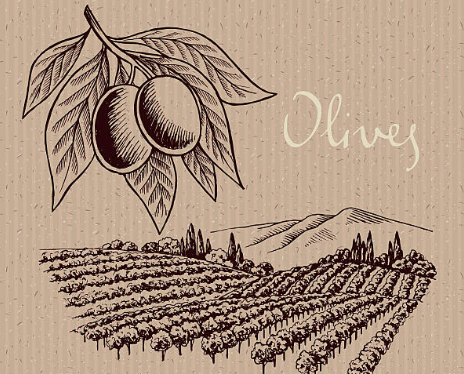Croatian Olive Regions
Spread over about 900 km of coastline and over more than 1000 Islands, different soil types, reliefs and types of climate – that represents the Croatian Olive regions. The area olive is grown can be divided into the following six sub regions:
1. Istria 2. Kvarner 3. Northern Dalmatia 4. Central Dalmatia 5. South Dalmatia 6. Dalmatian Hinterland.
Our olive groves belong to the northern Dalmatia region. The most common varieties are Oblica, Drobnica, Levantinka, Mastrinka and Karbunčela.

A small area full of history:
Zadar, existing already in Ilyric times before the romans in the 2nd Century used this as trading hub, Biograd na Moru founded in the 10th Century (during the 11th Century seat of the Croatian Kings) and the town of Šibenik founded in the 11th Century or Skradin next to the KRKA National Park & waterfalls are just a few highlights to see here.
Olive growing fields are stretching from Stari Grad to Rogoznica and the islands of Dugi Otok, Ugljan, Pašman, Silba, Molat, Ist, Murter and Kornati area. Today this region cultivates more than one million trees.
Ancient History of Olive Oil:
The oldest olive tree in the world is most probably the “al Badawi” olive located in Bethlehem. Experts date this ancient tree 5,000 years back or even more. Some of the oldest trees with an age of 2000 Years and more, still bearing fruits, are located on Malta, in Lebanon, Greece and Croatia. Archaeology confirms, that the producing of olive oil is dating back more than 5000 years as well.
In Lebanon: Named the Sisters Olive trees of Noah, are 16 of the oldest olive trees in the world, being also more than 4000 years old, located in the community of Bechealeh at an altitude of 1300 meters. The locals believe that these trees were the source of the leafs that Noah received in the ark during the biblical flood.
Throughout the Mediterranean history, the olive was a symbol of wealth,peace and fame. It played a fundamental role in the whole economy, arts, trade, culture and technology. It was Homer who coined the olive oil as “liquid gold” and it is the main component of the Mediterranean diet, one of the healthiest diets. Famous enough, that the UNSECO declared this diet an “Intangible Cultural Heritage” in 2012. The journey of this liquid gold began thousands of years ago in an era when mediterranean civilisations (Phoenicians, Greeks, and Romans) began to cultivate olives. The ancient Greek finally achieved the importance of olive oil we can enjoy today. Hippocrates nailed it when he said: “Let thy food be thy medicine and let thy medicine be thy food”. He was also the one believing in the olive oil’s natural healing powers and the first known medical practitioner to use it to treat wounds and traumas.
During the Middle Ages, olive oil revealed more and more healthy properties as it became a well-known treatment for sore throats, cuts and bruises. Today with lots of technology and advanced research available, we know a lot more about the blessings of high quality olive oil.
The ancient Romans already put olive oil into five categories:
- Oleum ex albis ulivis: The highest quality and most costly, made from unripe olives, picked only from the tree.
- Oleum viride: The 2nd highest quality because it was partially green and almost ripe olives.
- Oleum maturum: From fully ripe olives and available to everyone.
- Oleum caducum: The lower quality oil was made from fully ripe olives, collected from the ground.
- Oleum cibarium: The lowest quality oil was made from overripe even wormy olives collected from the ground. It was mainly used by the very poor and slaves.
